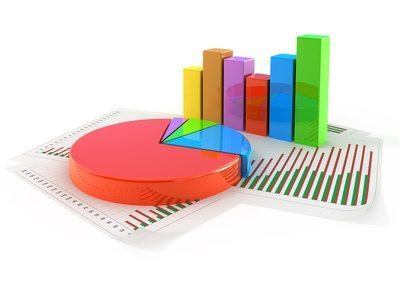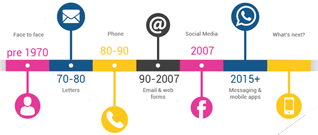Practical uses of CRM
Most companies track their customers' information using CRM systems. But how do you practically use such information? In this article we will see practical way for making profit with your CRM database.

What is CRM
CRM stands for "Customer Relationship Management" and entails everything related to your customers' management. CRM is also the term used to name the software that usually carries all your customers' information.
Theoretically, a company's CRM is a system where all customers' information is collected, stored, analyzed then re-used to improve efficiency and profit.
In the facts, most companies do not gather the right information and never drive the necessary analysis for pushing their profits.

How to use the information gathered with my CRM
The very first thing with CRM is to record as much information as possible while respecting your local "privacy" regulations: each country has specific rules on what you are allowed to record, for how long and how you can use it.
Each time you access customer information, record it precisely: it might become handy one day or another. An efficient way for collecting customer's information is using survey. You might want to read my article "CRM: plan your surveys properly" to find out some tips about bringing up efficient surveys.
But pure information does not bring much value if not analyzed. Please consider the following table:
|
# |
Name |
Gender |
Country |
Age |
TP/6m* |
Amount |
|
1201 |
John |
M |
USA |
24 |
9 |
1200 |
|
1202 |
Henry |
M |
USA |
32 |
3 |
400 |
|
1203 |
David |
M |
Hong Kong |
21 |
8 |
9000 |
|
1204 |
Eddy |
M |
USA |
53 |
1 |
500 |
|
1205 |
Irene |
F |
USA |
23 |
6 |
650 |
TP/6m* (Total number of purchases in the past 6 months)
If I just keep it as it is, it brings no value to my business. But if I start analyzing the data, I might find interesting facts.
Most of my customers are based in the USA, aged 20 to 25 and purchase in average once a month in my store.
I also found out that people from Hong Kong spend more money, even though they represent a smaller percentage of my customers.
Older people spend more money for each purchase but come less often.
Indeed, my sample here is far too small to draw any conclusion and the exercise is just used to understand the concept: using basic information I have been able to draw a more accurate portrait of my market.
The next step is to use buyer personas to truly identify my customers. I strongly advise you to read my article "Target your customers precisely with buyer personas" before going any further with CRM strategies.
Once this step finalized, you can really start making profit with your CRM strategies.
How does CRM influence my daily business
CRM is just a flow of information which, once properly analyzed, can influence all aspects of your daily business, influencing your profit as well as improving your image or the efficiency of your marketing campaigns.

Practical CRM in product development
Now, you know your market and, more importantly, you have a clear understanding of who your customers are and what they like.
Such information, extracted from your CRM strategy, should be an important part of your product development.
When creating a new product (or service) compare its characteristics to your buyer personas' expectations: would they like it?
If your product "matches", even approximately, your usual market, then try to make the product correspond as much as you can to your existing market needs: that way you will simply need to use your usual strategies to content your customers.
If your product doesn't fit your existing market, then it is time to think whether this product should really be developed, in which case you will need to attack a new market and therefore prepare this new challenge proactively.
If your product is a complete innovation and can hardly be compared to your existing market knowledge, I advise you to read my article "The key to successful innovation" that might help you out with this challenge.
Practical CRM in pricing
If you have recorded your customers' information properly, you surely know, in average per customer's category how much they are willing to pay for an item.
When creating a product and defining prices, companies usually base their judgment as follow: how much does the item cost me, how much margin do I need, how much will my distributor / wholesaler / retailer take:
initial cost + my margin + distribution margin = retail price
This approach is often proven wrong. What should be done from the very beginning is:
initial cost + my margin + distribution margin = minimum possible price
Then, compare it with what consumers are willing to pay for such item. If their expected price is lower than your minimum possible price, you should either find a way to cut the costs or drop the item before investing too much on it.
Many products have failed because they based their price on the cost instead of considering the market expectations.

Practical CRM in marketing and promotion
This is where CRM becomes the handiest.
If you have already created your buyer personas you surely have a pretty clear idea of what you can do with it.
When it comes to marketing and promotions, it is always difficult to estimate the impact of your strategies on the sales and therefore the ROI (Return On Investment). Nevertheless, when using buyer personas and information extracted from your CRM, you are sure to hit the right target with your strategies.
Whenever your create a promotional item (be it an ad, a website, a brochure, a poster, an event, a flyer, etc.), try to start from your knowledge base: your CRM.
Study carefully who is the expected recipient of this promotion, what he likes, how to reach him, what talks to him, then build your promotion on these facts. That way, you will increase the efficiency of all your promotions and decrease their cost (it is always cheaper and more profitable to have a precise shot than a "shoot them all" strategy).

Practical CRM in customer retention
This might be where the CRM is most commonly used.
For this specific usage, the CRM information is usually used on a "personal level": we extract personal information for each customer instead of defining trends on a larger scale.
Customer retention is basically the art of keeping your valuable customers to maximize the profit. Before retaining customers it is essential to define which customer is worth retaining and which isn't. For this purpose I have written an article "The mismanagement of customers' loyalty" that might be worth reading if you are currently running customer retention programs.
If you know precisely who is your customer, how much profit he generates and how much he costs you, you have more ease retaining him when necessary. Based on the information stored in your CRM system you will be able to generate customized programs that will encourage him or her to keep loyalty to your brand.

Practical CRM in customer service
"This conversation may be recorded for quality insurance purposes"
Have you ever heard this typical hotline sentence?
That is an example of what customer service can do to analyze customers' problems and solve them.
Another method is to keep track of all the problems and solutions encountered by your customer service department and record it as part of your CRM strategy.
Can you identify which common problem is encountered by each buyer persona? Have you defined a proper solution for it that you could standardize to simply erase the problem in the future or alternatively address it more efficiently?
CRM is traditionally used for finding and retaining customers in marketing-like strategies. But why wouldn't you share this essential knowledge with the rest of your company, enhancing the global understanding of the market and making sure problems are addressed in a more efficient way?

Conclusion
As you have seen, CRM really influences all aspects of your daily business. If correctly understood and used, a good CRM strategy can be a powerful tool that enhances your business while making sure all departments are working with the same information and for the same customers.
Last update: 2024-04-22 Tags: CRM customer relationship buyer persona customer service



















 Français
Français English
English